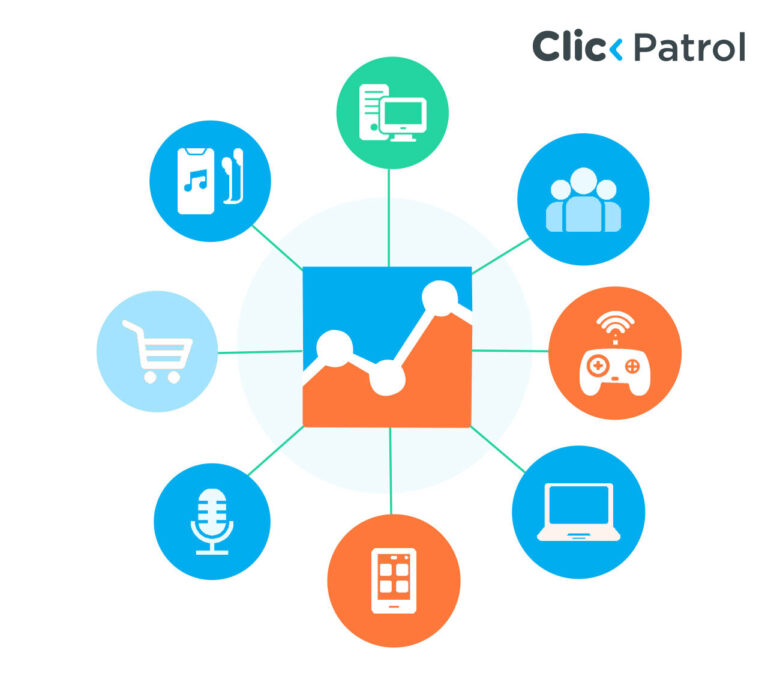
How to detect bot traffic in GA4
Abisola Tanzako | Sep 12, 2024

Table of Contents
Bot traffic in GA4 continues to cause a significant issue for online marketers.
It was estimated that in 2023, roughly half of all online traffic was invalid, primarily from bots browsing through websites. However, not every bot is harmful. Certain ones, like search engine crawlers, are beneficial. Yet some, such as spam or click bots, can interfere with your analytics and make it difficult to assess your traffic.
Therefore, Google Analytics 4 (GA4) is essential for detecting bot traffic and removing unwanted ones. It can be used as an initial indicator of bot activity because it is a tool that keeps track of every visitor to your website. This article will examine the specifics of using GA4 to detect bot traffic and take appropriate measures to reduce its presence on your website.
What is bot traffic?
Bot traffic is the term for automated website visits by computer programs instead of humans. These bots perform various tasks, such as evaluating your website’s functionality and indexing information for search engines. Unfortunately, they can also distribute spam, steal data, or engage in click fraud. Good bots, such as those used by search engines, are beneficial for indexing and ranking your website.
They are essential to the general health of your website since they help make your content visible in search results. It would help if you were looking for bad bots, like spam or click bots. They can deceive your stats by creating fake interactions or inflating page views and sessions.
What is bot traffic in GA4?
Regarding GA4, bot traffic refers to the automated visits described above. Because of this, the traffic does not indicate a genuine interest in your product or service, and if it finds its way into your analytics, it will affect the accuracy of your statistics. It is important to note that GA4 automatically filters out web traffic from known good bots and spiders.
This applies to bots that exhibit dependable behavior and established identities. This includes well-known SEO tools like Ahrefs and Semrush and search engine bots whose traffic would not appear in your GA4. Some new or less well-known bots, whether harmful or good, will still appear in your Google Analytics data. Google takes time to identify recurring website visits from the same sources or sources exhibiting particular trends.
Furthermore, while GA4 immediately purges the good bots from your reports, bad bot web traffic still finds its way into your analytics data. How can you identify and prevent its effects on your data and future actions? Let’s look at how to accomplish it in GA4.
How to identify bot traffic in GA4
To identify bot traffic in GA4, you can use a combination of built-in features and additional settings. While GA4 has some automatic mechanisms for filtering out known bots, it is important to implement further measures to enhance bot detection. Let’s explore how you can identify bot traffic in GA4.
1. Make your reports customized:
Only some metrics in GA4’s default reports can be used to differentiate between bot and human traffic. Therefore, the most important thing you can do is tailor your report data so that you can identify the telltale symptoms of bot activity. You can use the traffic acquisition and user acquisition reports since they contain the majority of these important metrics that you would like to see included.
You can view these reports in your Google Analytics 4 account by following these steps:
- Log in to your Google Analytics account.
- From the menu on the left, select “Reports.”
- In the life cycle collection, expand the “Acquisition” section.
- Select the desired report:
- Report on traffic Acquisition
- Report on user Acquisition
Once there, select the “Customize Report” button (pencil icon) in the right corner to begin customizing your report. After choosing Select “Metrics” under “Report data,” you can start adding metrics. We suggest the following metrics be added to each of these two reports:
i.) Report on traffic acquisition:
- Rate of engagement
- The average duration of engagement
- Sessions
- Engaged sessions
- Views per session
ii.) Report on user acquisition:
- Total users
- Users (It shows how many users are active.)
- New users
- Event count
- Engaged session per user
2. Identifying suspicious patterns
Here is how to spot suspicious patterns in your data:
i.) Behavioral data
- Short engagements: Unlike people, bots spend a few seconds on a page. Look for anomalies in the engagement rate (previously known as the bounce rate in GA) and average session duration.
- Unrealistic page views: Viewing hundreds of pages in one sitting may indicate scraping bots.
- Unusual interactions: Examples of bot-specific interactions include unusual scroll patterns, quick form fills, and accessing several pages without moving the mouse.
- An abrupt flood of spam comments: Spam bots’ primary goal is to visit your website and post spammy comments. Frequently, they add irrelevant links, use flattering language, or promote unrelated products.
- Declined card transactions: Whenever a transaction is attempted repeatedly, it is either a sign that the card has been stopped or that the thieves are attempting other variations.
3. Demographics data
- Traffic spikes from a single IP address: Malicious scripts or botnets can quickly produce significant traffic. A single IP address causing abrupt and significant spikes in site traffic clearly indicates bot traffic.
- Unlikely origins: Bots may cause traffic spikes from nations you do not want to target or visits marked as “Location not set.” Unusual sources, such as strange websites, data centers, or crawlers using strange user agents, indicate suspicious traffic.
- Unusual sources of traffic Unusual hardware or operating systems suddenly showing up could be a red flag for bot traffic. For instance, increasing the number of new users acquired from a single traffic source indicates suspicious activity.
How can I filter bot traffic in GA4?
Now that you know how to spot early indicators of bot traffic in GA4 let’s see how to prevent it from showing up in the first place. Though GA4 does not offer as much specific filtering as Universal Analytics, some features can be used.
1. Apply custom filters
In Google Analytics 4, you can alter or divide up the data according to specific criteria by using custom filters. You can customize the information you see in your reports by applying your favorite criteria. Doing this can prevent known or dubious bot traffic sources from contaminating your statistics.
In GA4, select “Reports” from the “Analysis” section to access custom filters. When you are in a report, the “Filter” button is at the top of the screen. Custom filters can be created based on various criteria, including user attributes, events, and other aspects. Select the part you wish to filter and specify the inclusion and exclusion criteria. “Include filter” and “Exclude filter” are available.
2. Create segments
The “Create segments” feature in GA4 is meant to assist you in defining and storing particular subsets of your data. You can also do this based on different criteria. When combined with segments, you can examine and comprehend how specific user groups or events behave within your larger data collection.
Go to your GA4 property’s “Explore” tab to create segments. Look for the “Segment builder” in the upper left corner once you get there. Under segment condition, you can:
- Exclude known bots: Incorporate a clause such as “User Agent does not contain” and list popular bot user agents, such as “Googlebot,” “Bingbot,” and “SemrushBot.”
- IP address-based filtering: If you know that certain IP addresses are connected to bots, list the IP addresses and create a condition like “IP Address does not equal.”
Analyze engagement and events: Include criteria based on low engagement metrics or questionable event patterns: - “Events count is lesser than X.”
- “The length of the session is less than Y seconds.”
“Pageview is equal to one per session.”
3. Set up unsolicited referrals.
The referral exclusion list in GA4 allows you to exclude specific domains from being considered referrals. You can block up to 50 undesirable referrals per data stream to exclude known bot or spam referral traffic. Go to your GA4 property settings, select “Data Streams,” then click on the appropriate data stream to create the referral exclusion list. The “Referral Exclusion List” feature is accessible from that section.
Bot mitigation solution.
Although the above tactics can increase the consistency of your data, they cannot ensure that your reports are free of bot activity. Bots can be excluded from reports using GA4 filters; this does not entirely prevent them from accessing your website. The key to effectively combating bot and spam traffic is prevention using bot mitigation solutions.
This requires more than merely removing them from your Google Analytics data. You must prevent them from visiting your website and engaging online.
FAQs
Q1: Does GA4 block bot traffic?
Yes, Google Analytics 4 (GA4) does block bot traffic. It automatically filters out known bot and spider traffic to ensure your data remains accurate and free from misleading information. However, for comprehensive protection from bots, third-party tools such as ClickPatrol offer the best solution





